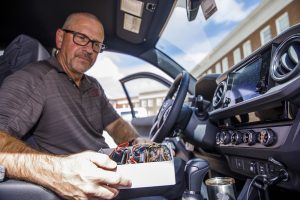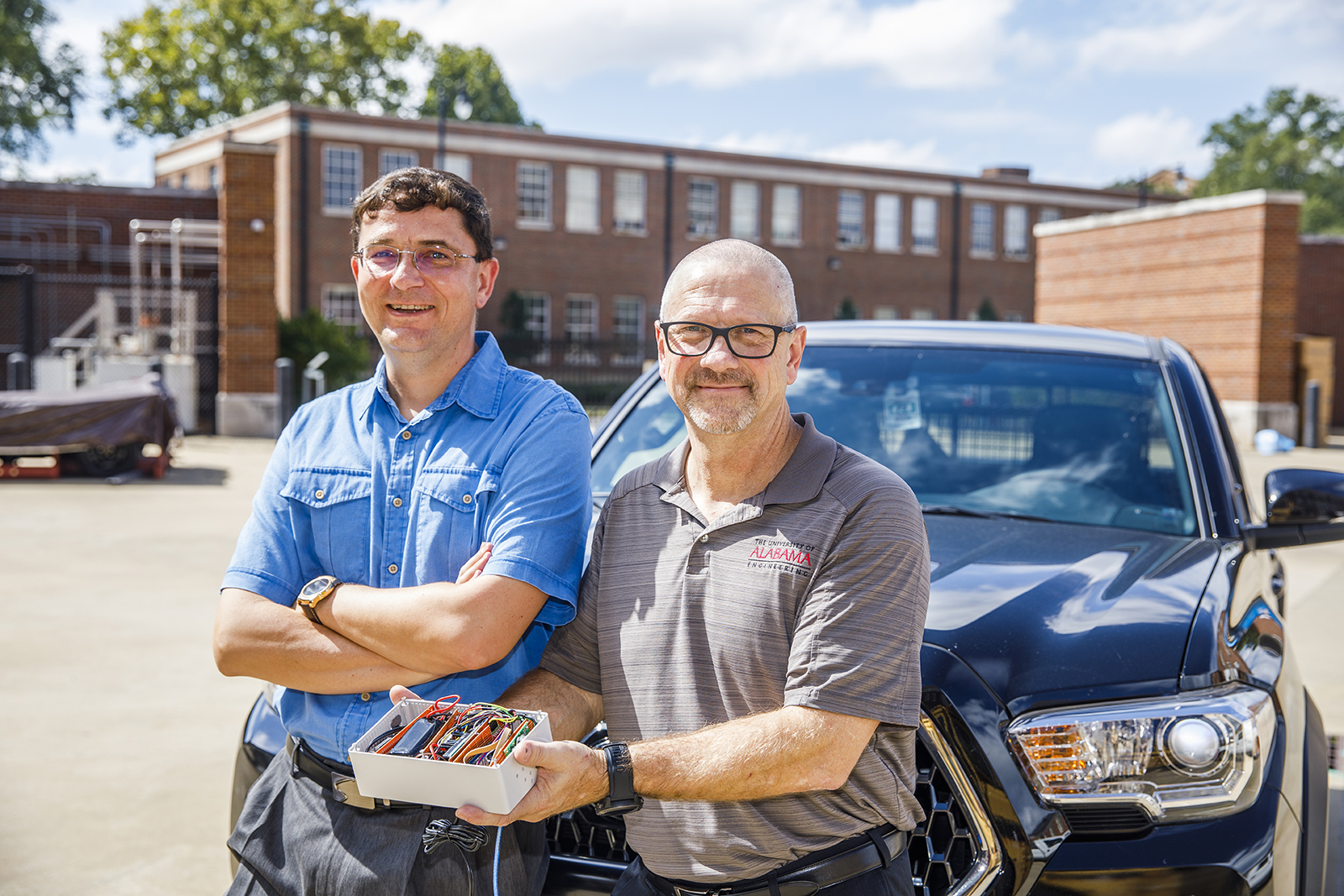
TUSCALOOSA, Ala. — An average of 37 children die each year in the United States from being trapped inside a hot car, and engineering researchers at The University of Alabama have crafted a solution to prevent these tragic accidents.
A patent-pending device can alert a cell phone when a human or animal is inside a parked vehicle getting too hot. It was developed by UA students from a concept devised by Dr. Timothy A. Haskew, department head and UA professor of electrical and computer engineering,
The device monitors carbon dioxide levels from human breath inside a vehicle along with temperature and car movement, using computer algorithms to determine when to alert a cell phone.
“Kids are dying every year, and one is too many,” Haskew said. “This is a technology that could save lives right now.”
The technology comes from Haskew’s background developing methods to detect harmful levels of carbon monoxide in gas-powered electric generators for the Consumer Product Safety Commission, which can become deadly if the generator runs in a confined space. With this project, though, a generator would not be turned off, but the device could alert a person to danger.
“In this case, the presence of the gas allows us to detect someone and save their life,” he said.
According to statistics compiled by Jan Mull, a meteorologist at San Jose State University who uses his data to operate noheatstroke.org, an average of 37 children have died annually since 1998 from being left in hot cars, which doesn’t count the 46 deaths so far this year.

There are products available that detect weight in car seats and alert a driver, and there are motion detectors as well that can alert when a pet or child is moving.
However, not every child heat death in a vehicle can be detected through car seats. Twenty-seven percent of deaths since 1998 come from children trapped after entering an empty vehicle, according to noheatstroke.org. Even motion detectors might not work if an infant is asleep in a car seat. Haskew wanted a solution for both circumstances.
“I wanted to be able to tell there is something alive in the car while it isn’t running,” he said. “Everything that lives breathes, and everything that breathes emits CO2.”
Haskew asked Dr. Edward Sazonov, a UA professor of electrical and computer engineering who has a background in sensor technology, to help create the computer programming, or algorithm, necessary to make the device work.
Then, Haskew handed the idea and a system diagram to a group of students who used their senior year to develop the device. Using themselves and family, they collected data and CO2 levels and temperature inside a car with and without people.
With that data, they programmed a sensor to detect the gas and coupled it with a temperature gauge and an accelerometer to detect small vibrations that come from the engine. When it senses the car is off, it begins monitoring heat and CO2 levels. An alert is sent to a cell phone when quickly rising heat and a buildup of the gas are present. Bluetooth technology in the device allows users to program the cell phones to send a text message.
“Our alert reduces false alarms, but it doesn’t take chances,” Haskew said.
The UA Office for Technology Transfer is marketing the intellectual property, which is the device and signal processing necessary to tie in the sensors and alert system. Haskew and Sazonov are listed as inventors on the patent.
Contact
Adam Jones, UA communications, 205-348-4328, adam.jones@ua.edu
